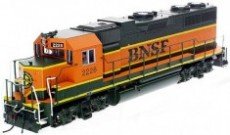Everything on model trains, model railroads, model railways, locomotives, model train layouts, scenery, wiring, DCC and more. Enjoy the world's best hobby... model railroading!
HO Metal Building siding
Claude has a question for readers:
“I am looking for a source of patterned styrene siding for metal bldgs. I have checked Plastrut and all they have is a corrugated metal profile. Evergreen only has a grooved sheet. Metal bldgs now-a-days have a raised 2 rib on 12 centers. I am wondering what others use to realistically model this type of metal siding. Thanks for any suggestions.”
Comment below.
Rusty Train Tracks
Lee is having a problem with rusty O scale track and asks:
“One of my tracks goes through the wall of the game room out into the garage. I live at the coast (NC) and I am having a hard time keeping this track clean. As in rust. HELP PLEASE!”
Add your comments.
HO Car Weight
Archie has a question for other hobbyists and asks:
“I received an email where it mentioned something about car weight. My question is, do ho train cars need to be weighed down any? How can you add weight to a tank car? I’m sure that in a box car you can take it apart and put weight inside but tank cars and flat cars?”
Add your comment.
HO, HOn30 DCC for Walthers, Sperry
Charles from Canberra in Australia asks readers:
“G’Day from Oz, I have just ordered an HO Walthers Sperry Rail Detector Car and it’s in the Mail. It is HO DC and I would like to convert it to DCC.
Any advice/suggestions/recommendations from those in the know will be very much appreciated.”
Model Train Photos
 527 model railroaders participated in our recent poll which asked: “Do you take railroading photos/videos? If so, what do you prefer to use?” The results were as follows:
527 model railroaders participated in our recent poll which asked: “Do you take railroading photos/videos? If so, what do you prefer to use?” The results were as follows:
- YES, digital camera only (stills) (33%, 175 Votes)
- NO, I don’t take photos (31%, 164 Votes)
- YES, both video and still photos (31%, 162 Votes)
- YES, film camera only (stills) (4%, 22 Votes)
- YES, video camera only (1%, 4 Votes)
Click this link for some great model train photos and clever ideas.
Staging Yards – Pros and Cons
 Some quick tips submitted by Andy:
Some quick tips submitted by Andy:
A staging yard is a hidden place that is used for storing unscheduled trains. It can also be used for rearranging trains between or during scheduled times. A classic and fiddle staging yard consist of parallel tracks on plain ground and a pivot respectively.
Advantages:
- Trains can be moved in and out of the yard in random order.
- Operations can be automated and continuous.
- Schedules can be changed in a short time.
Disadvantages:
- Staging yards take up extra space on the layout.
- Concealing is a problem if yard size is large.
Click this link for some excellent model railroad scenery ideas.
Railroad Track Spurs
 Ed sent in this short tutorial to share:
Ed sent in this short tutorial to share:
“Spurs are short-length rail road tracks used for train storage, customer/station services and loading/unloading operations.
Spurs are of two main types; single ended and double ended. A single ended spur has only one terminal connected to the main line. It can be leading or trailing. A leading point spur branches off in the forward direction and a trailing point spur branches off in the reverse direction. The latter is a better choice because it simplifies operations. A double ended spur has both ends connected to the main track.”
Train Made From Chocolate – YUM!
John kindly sent in this story for publication:
A train made entirely of chocolate has set a new Guinness World Record as the longest chocolate structure in the world. The sculpture, on display at the busy Brussels South station, is 112-feet (34.05 meters) long and weighs over 2,755 pounds (1250 kilos).
Maltese chocolate artist Andrew Farrugia spent over 700 hours constructing the masterpiece. He said he came up with the idea of the train last year after visiting the Belgian Chocolate Festival in Bruge: “I had this idea for a while, and I said what do you think if we do this realization of a long chocolate train, you know, because a train you can make it as long as you like. “Actually it was going to be much smaller than it was, but I kept on adding another wagon, and another wagon, and it’s the size it is today.”
After measuring the length of the train and confirming no material other than chocolate was used, officials from the Guinness Book of World Records added a new category to the collection of world records and declared the train to be the longest chocolate structure in the world.
N scale Atlas Flex Track and Bachmann E Z Track
Louis asks readers for advice:
“I currently have a Bachmann (n scale) E Z Track. I would like to join Atlas flex track to the e z track. Which Atlas flex track would be best to use? Would Atlas code 80 be correct? Any assistance would be appreciated.”
Add your suggestions.
MTH System O Gauge Train or Track Problems
Jorge asks readers:
“I have a track problem as my train stops all the time and I believe it is dirty track. I’ve tried all ways to clean but still the problem persists. Can someone help me in this matter? I have the MTH system track and o gauge. Thank you.”
Track Cleaning
Lou sent in this question for others to answer:
“After 40 years I decided to try my hand at model railroading again (boy has it changed). I am 75 and retired so I have to watch the dollars. That being said I went to Ebay to buy used track, and got some really good deals. My question is what is the best way and or product to clean Atlas Brass Track.”
Add your answer.
Common Scales and Gauges for Model Railroads
A scale is the ratio of model trains to real trains. It can also be expressed as millimeters per foot or fractions of an inch per foot. A gauge is the distance between tracks. The standard distance is 1435mm (4 foot 8-1/2 inches) or the equivalent distance ratio. Any measurement less than this is called a narrow gauge and any measurement greater than this is called wide gauge.
|
Scale |
Ratio |
Gauge (mm) |
| HO Scale | 1:87 | 16.5 |
| OO Scale | 1:76 | 16.5 |
| O Scale | 1:43 | 32 |
| S scale | 1:64 | 16.5 |
| N Scale | 1:160 | 9 |
| G scale | 1:22 | 45 |
Runaround Tracks Explained
Shane sent in this brief article to share:
A runaround track allows a train to move in front or at the back of another train or locomotive. It is usually used at the terminal of a branch line to prevent the train from reversing direction.
A runaround track easily switches between carriages. Switches are installed at both ends, allowing a locomotive to push another car into a point facing spur by going around it in parallel. This is useful when trains return from a trip and drop off cargo. Using engines at both ends of a train eliminates the need of ‘running around’.
Installing a Tortoise Switch Machine
Malcolm sent in this short article:
 A tortoise switch machine is a DC device used for controlling turnouts. Their precision, due to their slow speed, makes them ideal for use in a model railroad.
A tortoise switch machine is a DC device used for controlling turnouts. Their precision, due to their slow speed, makes them ideal for use in a model railroad.
- Bend the spring wire at an angle of 15o and 80 o at two points. The distance between the points must be three-fourth of an inch.
- Place the fulcrum onto the rails.
- Mount the machine on a wooden template, and attach it onto the fulcrum using adhesive.
- Fix the spring wire through the fulcrum such that the bent side is inserted into the throw arm.
- Connect the machine to power.


















